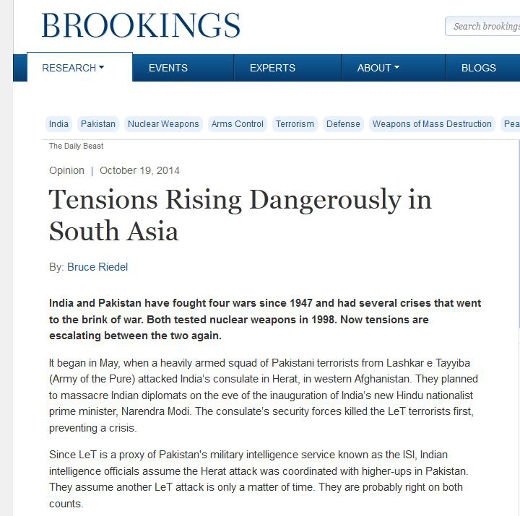What happens when you have the confluence of terrorism, geopolitics, populism and religious fervor? Usually it is bad news and the Indian sub-continent has been in a constant state of tension as we have two dissimilar paths being taken by the main protagonists. You have one country trying to rapidly industrialize and grow its economy while the other is well on its way to sliding into extremism. In this article, Bruce Riedel of the Brookings Institution’s Intelligence Project looks at the rise in tensions between India and Pakistan.

Tensions continue to rise between India and Pakistan
“This summer, clashes between Indian and Pakistani troops have escalated along the ceasefire line in Kashmir. Called “the Line of Control,” the Kashmiri front line this year has witnessed the worst exchanges of artillery and small arms fire in a decade, displacing hundreds of civilians on both sides. More than 20 have died in the crossfire already this month. Modi has ordered his army commanders to strike back hard at the Line of Control to demonstrate Indian resolve.
Although Modi made a big gesture in May when he invited his Pakistani counterpart, Nawaz Sharif, to his inauguration, since then Modi has canceled routine diplomatic talks with Pakistan on Kashmir and signaled a tough line toward terrorism. He also appointed a very experienced intelligence chief, Ajit Doval as his national security adviser. Doval is known as a hard-liner on terrorism—and on Pakistan.
Modi’s Bharatiya Janata Party strongly criticized his predecessor, Manmohan Singh, for what it saw as a weak response to LeT’s attack on Mumbai in 2008. No military action was taken after 10 LeT terrorists, armed and trained by the ISI, killed and wounded hundreds of innocents, including six American dead.”